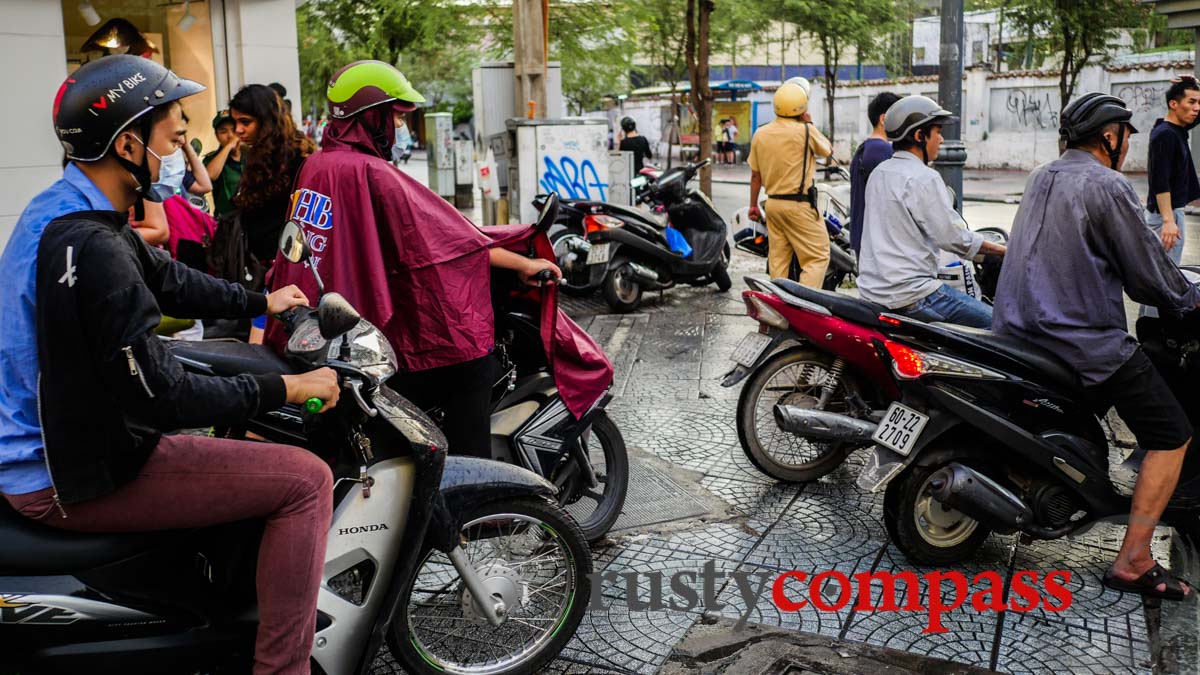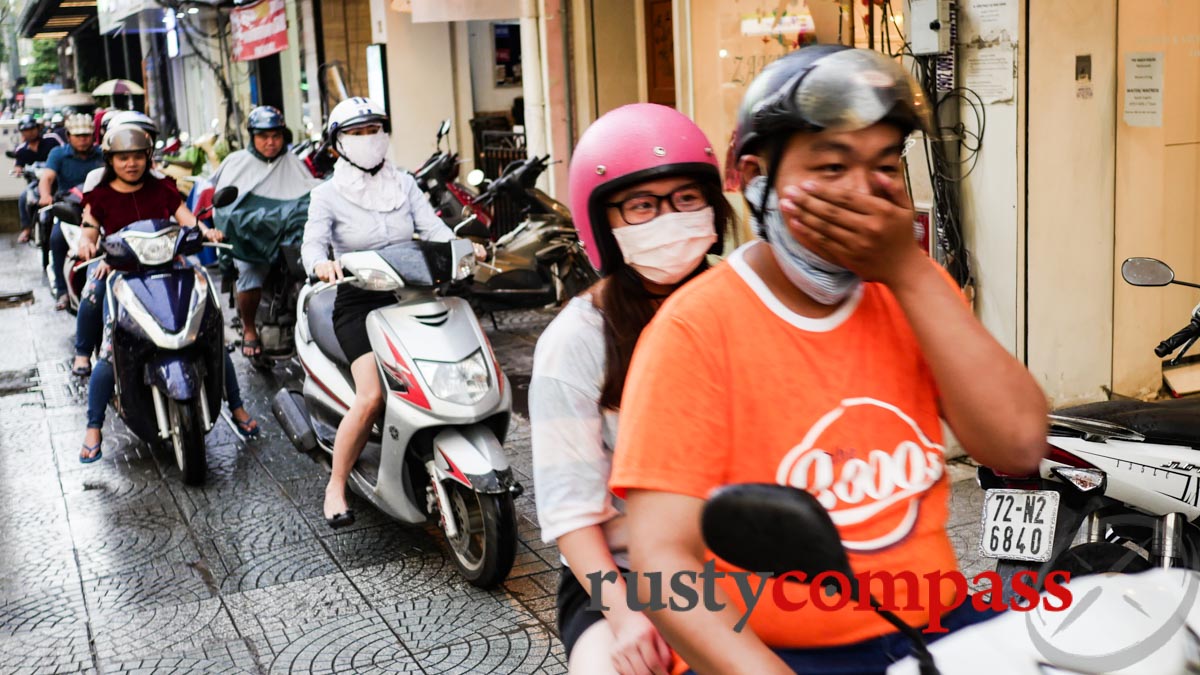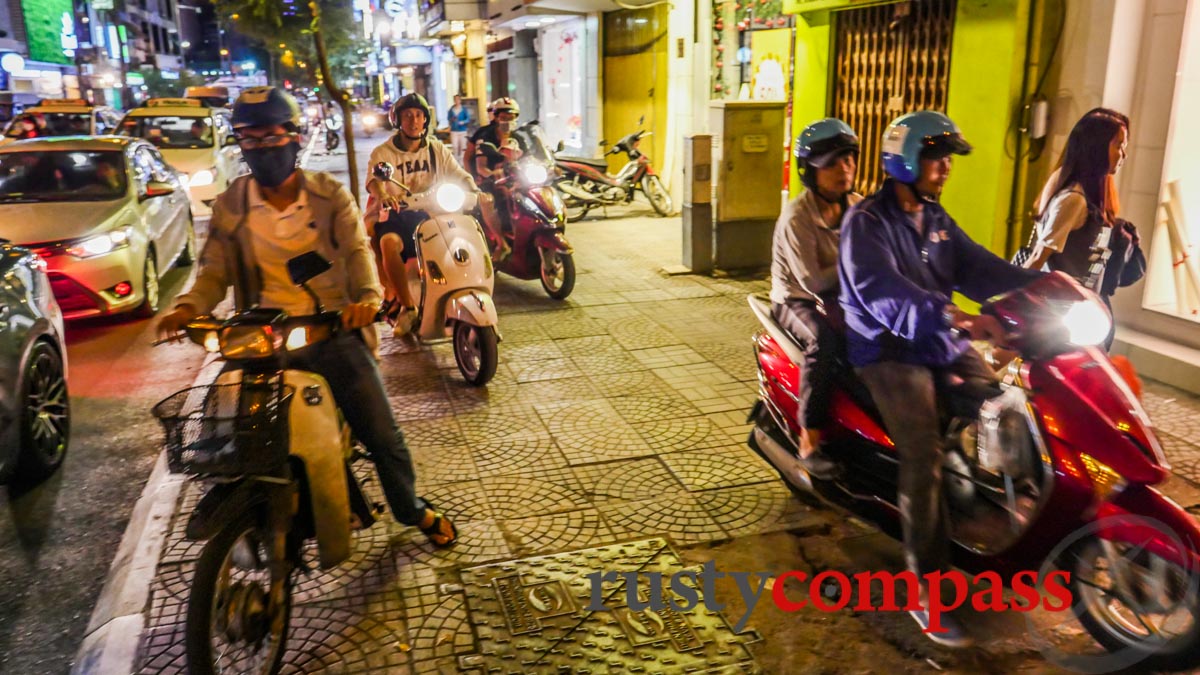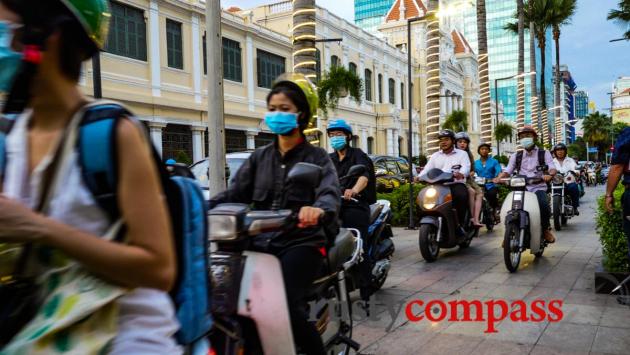A few months ago as I walked along Pasteur St in downtown Saigon, I watched a motorcyclist mount the pavement at speed, ride through the ineffectual barriers that have been placed to deter such riding, and hurtle towards a family of tourists. The family couldn’t see the bike as they were headed in the same direction.
On their right side was the French colonial People’s Committee Building, the centre of city government. On their left was the Ho Chi Minh City Museum, another colonial era edifice and a major tourist attraction. The cover of two official buildings may have created a sense that this was safe terrain for walking. It wasn’t.
The motorcyclist made no concession as he headed towards the tourists at speed. When he was a few metres away, one of the children dashed unexpectedly to the right. The motorcyclist responded quickly and veered to the right as well. An accident was avoided. It was very close. It could have been tragic.

Photo: Mark Bowyer Motorbikes colonise the pavements. Outside the Reunification Palace.

Photo: Mark Bowyer A policeman looks the other way. Saigon's pavements.

Photo: Mark Bowyer A downtown Saigon pavement - metres from hotels and the centre of government.

Photo: Mark Bowyer Saigon pavements - motorcycles increase their speeds at night.
As I continued along Pasteur St and onto Ly Tu Trong St, I saw perhaps a dozen other motorbikes riding with varying degrees of disregard for the welfare of pedestrians. Some even honked their horns, demanding the pedestrians get out of their way. Yes, this was the pavement.
But this is standard fare on the streets at the centre of Saigon - all day each day.
I talk to a lot of tourists and over the past six months, some have brushed off Saigon’s pavement madness as a curious amusement. I’ve also heard some horrendous stories. An elderly Danish lady was knocked to the ground by a thief on a motorcycle who mounted the pavement outside the Reunification Palace. Two young French girls were hit by a motorbike nearby the Post Office.
Late one evening, I watched as a motorcyclist mounted the city’s Nguyen Hue walking street, headed towards a tourist taking a photo of Uncle Ho and the People’s Committee Building. The motorcyclist deftly relieved the tourist of his iPhone.
It turned out the tourist - a young American - was pretty agile and he gave chase.
In evading his athletic victim, the thief rode through crowds on the street that is supposed to be restricted to walkers with deadly disregard. In the end, nobody was hurt. The thief kept the phone. A potentially deadly accident may have been avoided. But the thief won the day.
There’s no way of knowing how often incidents like this occur in Saigon. Nor how many people have been injured. We're only likely to hear about the most serious incidents.
This shouldn’t be considered normal. Saigon's residents, its tourism industry and its visitors deserve better.
Last year, a campaign was launched by a city official to “civilise” Saigon’s sidewalks. Parked motorbikes and sellers were cleared away. Now, speeding motorbikes, not walkers, have filled the vacuum. Pavements are more dangerous then ever.
It’s not just the serious risk of injury or theft though. Walkability and green spaces (another low priority in Saigon) are increasingly linked with liveability and quality of life in cities. Saigon would be a healthier city with more walking and green space.
And there's the city’s reputation too.
Hanoi’s leaders seem to be aware of the importance of walking precincts. So do leaders in Hue, Danang and Hoi An.
Saigon’s population and development pressures may be greater than other cities. But District 1 has become a debacle of dysfunction - made worse by anarchic pavements and Metro disruption. A dose of civic love and some determined enforcement, would help a lot.
See a previous piece from March 2017, on Saigon's pavement problems.





There are no comments yet.